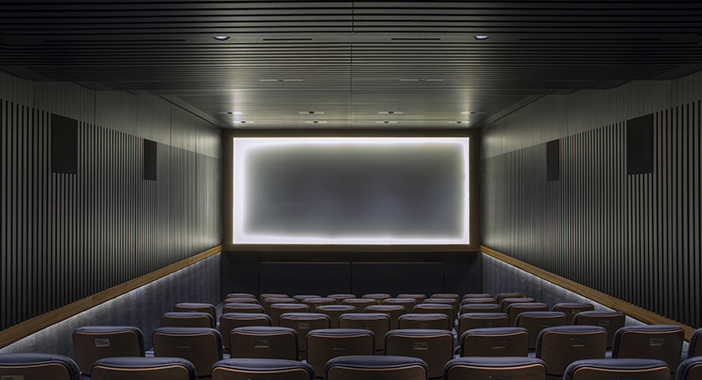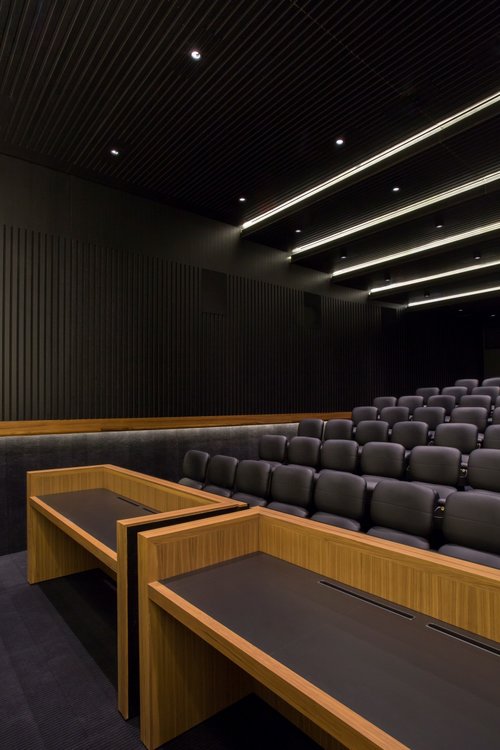Timber Awards 2015: Glasgow Film Theatre cinema 3
Read more about Glasgow Film Theatre’s cinema 3, which was shortlisted for the RIAS Best Use of Timber Award 2015.

Glasgow Film Theatre, formerly the Cosmo Cinema, is Scotland’s first art house cinema. It opened in 1939.
Designed by prolific Scottish cinema architect James McKissack, both its exterior and interior convey the romance of the world of film. From the outset, the architects were fascinated with the inherent richness and crafted appearance of the original building.
A palette of materials was developed to reflect the original 1939 design. This included brass, bronze mirror, sustainably sourced teak and terrazzo, re-introducing a familiar continuity of detail and craft.
The project
The first phase alteration works introduced a new 60-seat digital auditorium: cinema 3. This was alongside a new, reconfigured entrance box office and implementation of efficient boiler plant and services infrastructure.
The clients’ aspirations for the new cinema were to offer a comfortable, modern and high-quality viewing experience with the largest possible screen to provide cinemascope capability.
Cinema 3 was proposed to replace the underused Café Cosmo space. To optimise the screening layout and to accommodate the requirement for 60 seats, every inch of construction space became valuable. Some careful excavation and stripping-back works were required to provide complete sound separation from the existing two auditoriums.
A new ‘box in box’ construction and tiered seating arrangement maximises the viewing experience. The architects’ approach and strategy to the new cinema’s internal treatment were to combine the demanding acoustic requirements with a rich architectural expression.

Use of timber
Use of wood appears throughout Glasgow Film Theatre including structural elements, solid balustrade and railings, veneered panelling and detailed furniture pieces. Since opening in 1939, the interior has acquired heritage value for creative timber applications.
Drawing from the cinema’s heritage a palette of timber materials was inspired by the original 1939 design. This resulted in the specification of sustainably sourced teak, stained timbers, profiled timber mouldings, slats and intricate profile forms.
Using local wood manufacturing expertise allowed for workshop precision and controlled craftsmanship. An independent structure was innovatively formed and constructed using a timber joist portal frame. The entire interior or ‘slatted hood’ offered a unique but distinctive aesthetic in contrast to the norm of plaster and fabric-lined auditorium spaces.
The new ebony-coloured timber acoustic ‘hood’ with celebrated teak edge trims defines the room. It is crafted in a manner that adds a subtle sense of decoration to the compact space. It does this while concealing all AV equipment, LED lighting and ventilation components and reducing visual distractions.
Bespoke leather ‘Charles’ seats, manufactured by an auditorium seating specialist, were designed in collaboration with Glasgow Film Theatre. Their teak backings enhance cinema 3’s spatial qualities and make visual and material reference to the former grandeur of the 1939 interiors.
Header image credit: Dapple Photography
A library of sustainable building materials
Our website includes a web-based resource that showcases sustainable, traditional, innovative, recycled and low carbon building materials. If you are looking for inspiration or information on different types of materials to consider for your project, visit our materials library.
